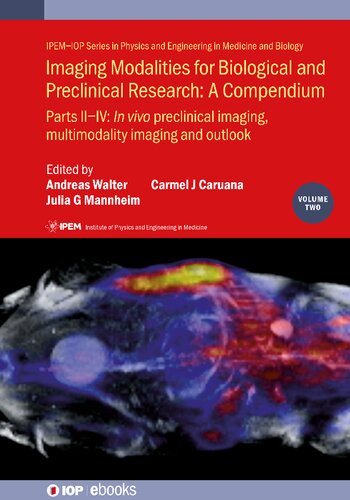

Most ebook files are in PDF format, so you can easily read them using various software such as Foxit Reader or directly on the Google Chrome browser.
Some ebook files are released by publishers in other formats such as .awz, .mobi, .epub, .fb2, etc. You may need to install specific software to read these formats on mobile/PC, such as Calibre.
Please read the tutorial at this link: https://ebookbell.com/faq
We offer FREE conversion to the popular formats you request; however, this may take some time. Therefore, right after payment, please email us, and we will try to provide the service as quickly as possible.
For some exceptional file formats or broken links (if any), please refrain from opening any disputes. Instead, email us first, and we will try to assist within a maximum of 6 hours.
EbookBell Team

4.0
36 reviewsThe relentless pace of innovation in biomedical imaging has provided modern researchers with an unprecedented number of techniques and tools to choose from. While the development of new imaging techniques is vital for ongoing progress in the life sciences, it is challenging for researchers to keep pace. Imaging Modalities for Biological and Preclinical Research is designed to provide a comprehensive overview of currently available biological and preclinical imaging methods, including their benefits and limitations. Experts in the field guide the reader through both the physical principles and biomedical applications of each imaging modality, including description of typical setups and sample preparation.
Volume 2 focuses on in vivo imaging methods, including intravital microscopy, ultrasound, MRI, CT and PET. Correlative multimodal imaging, (pre)clinical hybrid imaging techniques and multimodal image processing methods are also discussed. The volume concludes with a look ahead to emerging technologies and the future of imaging in biological and preclinical research.
Key Features